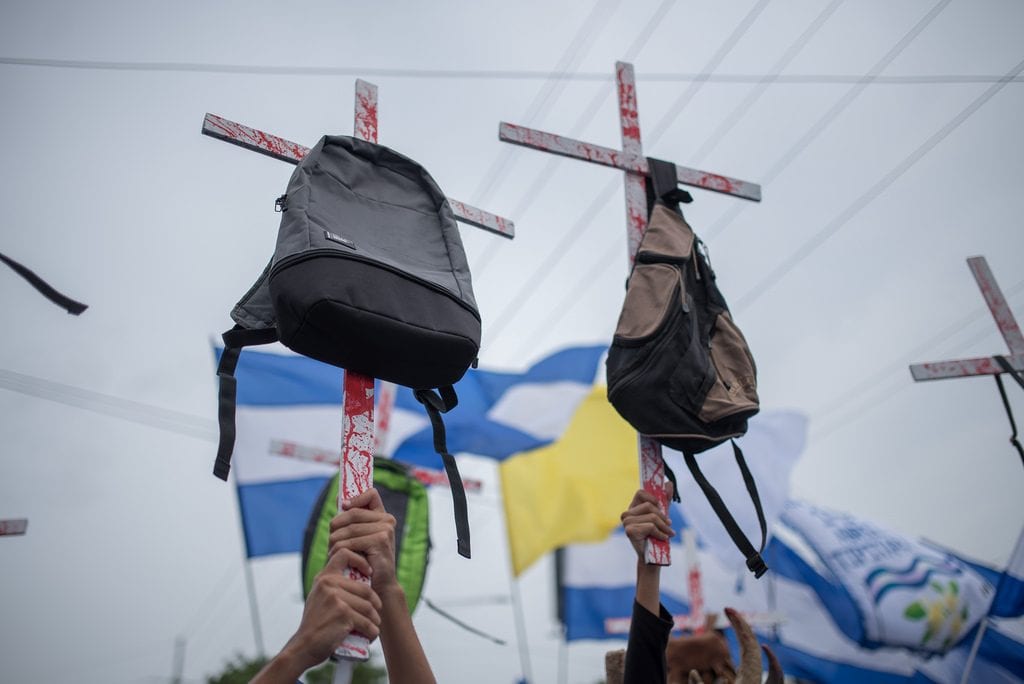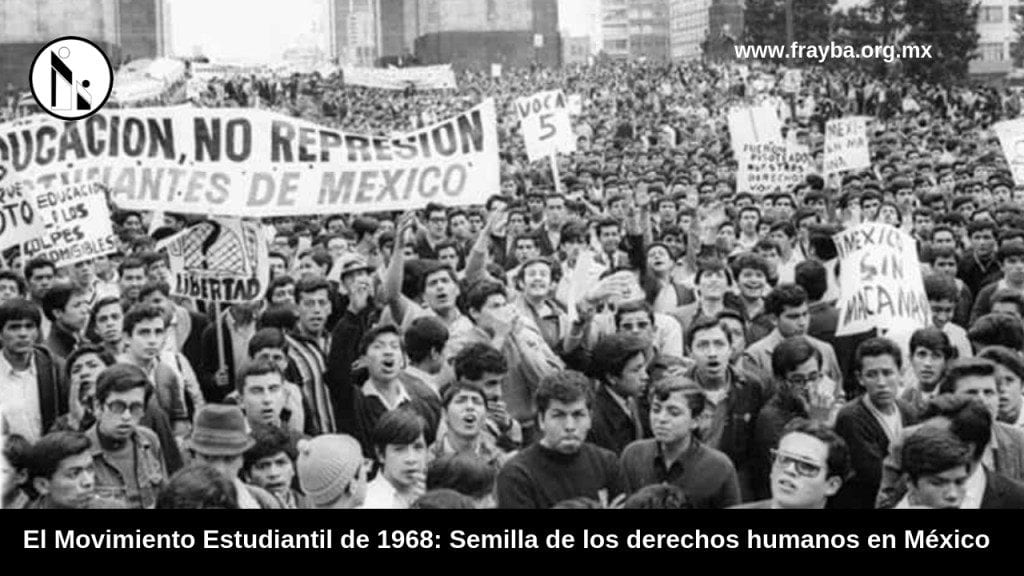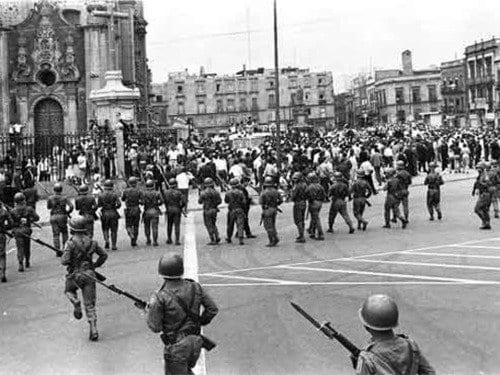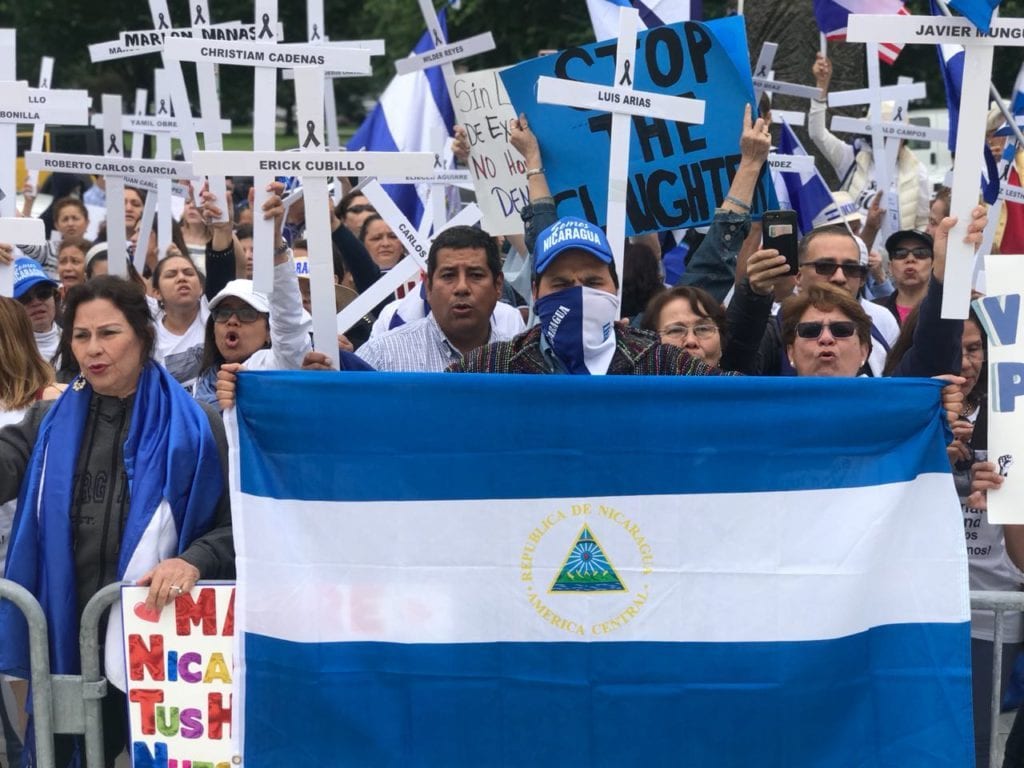Two Massacres: Mexico 1968, Nicaragua 2018

Tlatelolco is the great trauma and watershed of Mexican political history. What does the rebellion of April 18 represent in Nicaragua?
By Jose Luis Rocha (Confidencial)
HAVANA TIMES – What does the April Movement in Nicaragua and the events it set off resemble? It resembles the 1968 Movement in Mexico and its culmination in the Tlatelolco massacre. Two social movements, two massacres: Mexico 1968, Nicaragua 2018.
There are coincidences in what the university students were demanding and how they did things: the leadership of the movement, their surprising explosiveness from a supposedly prolonged political apathy, their creativity in the use of resources, their daring courage, their eyes emptied of clues of what happened to them very early—massive support and excessive repression—, their international contacts and the capacity to generate favorable media coverage to their cause, among many other traits and achievements.
There are also similitudes in their list of demands: freedom for political prisoners, legislative reforms, dispersal of riot police, dismissal of police chiefs, delimiting responsibilities…
Several similarities are also in the events that their actions stirred up: the politicization expressed in the massive demonstrations where a society that seemed to have resigned itself to the abuses of the State-party and to the “representative” democracy of a single party turned up, with the support of artists and academics (in The night of Tlatelolco, Elena Poniatowska left a collage of visions about the massacre that are still insuperable). The piquancy and ingenuity of their canvases and slogans (and now also of memes), the disperse and anarchic initiatives, the involvement of multiple sectors and social classes…and a very long etcetera.

Who were in the protests and who did they protest against? According to reporter Oriana Fallaci, who was in the “Plaza de las Tres Culturas” (Square of the Three Cultures) and received a barrage of bullets that nearly took her life, there were “students, workers, school teachers, in short anyone who had the courage to protests against Herod, which in Mexico is called the Institutional Revolutionary Party (PRI) and claims to be socialist, but it is incomprehensible what type of socialism from the point of view that the poor in Mexico are among the poorest in the world.” Neither more, nor less: just as in Nicaragua.
Many similarities exist in the methods and discourses of the government: their claim to be a revolutionary, the absolute control over university authorities, their reluctance to a true dialogue, the merciless murders, detentions without warrants, their rush to impose normality and that of the rectors of public university to pretend it, their erratic explanations of denial and their conviction of being a victim with the right to demand punishment.
A month before ordering the massacre, Gustavo Diaz Ordaz, let out of his mouth overflowed by prominent teeth these words before the Mexican Congress: “We have been tolerant up to being excessively criticized, but everything has a limit and we cannot allow it to continue to break the legal order, as in the eyes of the whole world has been happening.”

Octavio Paz wrote five years after the Tlatelolco massacre an assessment he could have written five months after the one in Nicaragua:
“The students, when they take to the streets, discover common action, direct democracy and fraternity. Armed with these weapons, they make their way in the face of repression and conquer popular support in a very short time (…) the youthful wave crashes against the wall of power and governmental violence is unleashed: everything ends in a pool of blood. The students sought public dialogue with power and power responded with the violence that silences all voices.”
And on the other side is the attitude of the government, also very similar to that of Nicaragua:
“It is not that our rulers were blind and deaf, but that they did not want to hear or see. (…) Accustomed to the monologue and intoxicated by a high-sounding rhetoric that surrounds them like a cloud, our presidents and leaders can hardly accept that there are other wills and opinions different from theirs. They are the past, the present and the future of Mexico. The PRI is not a majority political party: it is unanimity. The President is not only the maximum political authority: he is the incarnation of Mexican history, Power as a magic substance transmitted from the first “tlatoani” (ruler or king) through viceroys and presidents. (…) The military operation against them (the university students) was not only a political action but took on the form of a quasi-religious punishment from above.”
Following—or inspired by—this script, the response of the Ortega-Murillo Government was to criminalize the students and cry out to the sky and its paramilitaries for punishment. It declared criminals and even legally labelled as terrorists those who protested against those who embody the past, the present and the future of Nicaragua, in a genealogical tree that begins with Augusto C. Sandino and, at the moment, culminates in Juan Carlos Ortega, reincarnation of Sandino, as his mother Rosario Murillo firmly believes.

The Tlatelolco of 1968 and the Nicaragua of 2018, half a century apart, have been close even in the number of deaths and prisoners: 325 massacred estimated the journalist John Rodda, who was preparing a report about the Olympic Games for The Guardian in 1968. It is a figure disturbingly close to the estimated minimum of murdered by the police and paramilitaries under Ortega’s orders. How many prisoners? Around 500 in Mexico and 552 reported as kidnapped in Nicaragua, most of them prisoners, all apprehended and reported by their families to human rights organizations.
That is where the coincidences and similitudes end. The disproportion is obvious: compared to its impact on just over six million Nicaraguans in 2018, the amount of deaths and detained in Mexico in 1968 was divided into a population then of almost 50 million. The massacre in Mexico was concentrated in one night. Most of the murders in Nicaragua were perpetrated in a couple of months. Tlatelolco is the great trauma and watershed of contemporary Mexican political history. Its wounds are still open. What do the April 2018 rebellion and massacre in Nicaragua represent?





